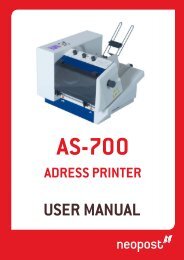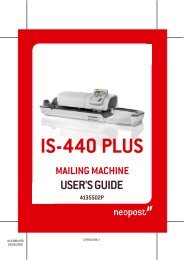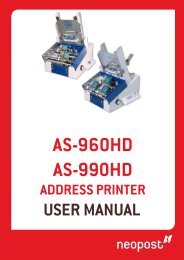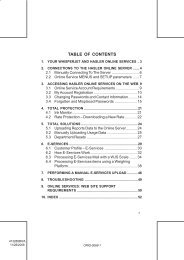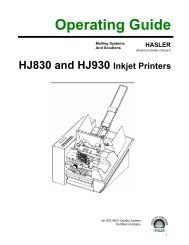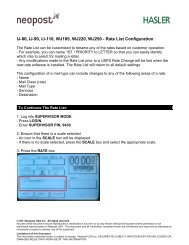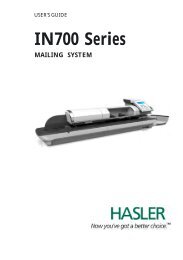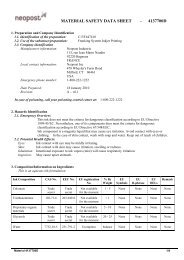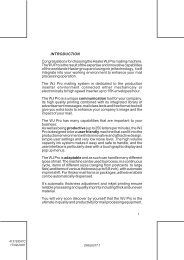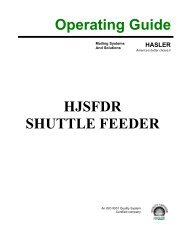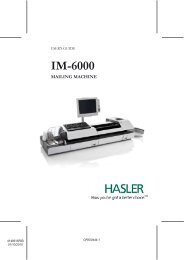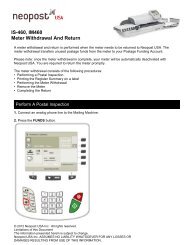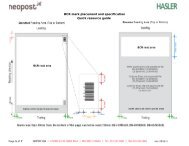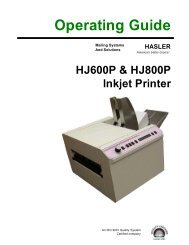AS-700, AS-710
AS-700, AS-710
AS-700, AS-710
You also want an ePaper? Increase the reach of your titles
YUMPU automatically turns print PDFs into web optimized ePapers that Google loves.
Serial Interface<br />
• Handshake<br />
Handshaking is a signal exchange between the computer and the printer. It is<br />
necessary, in order to prevent overflow or loss of data in the printer buffer.<br />
The type of handshaking depends upon your computer system or terminal.<br />
The PRINTER <strong>700</strong>/<strong>710</strong> supports three methods for the transmission of serial<br />
data.<br />
• Software handshaking<br />
XON/XOFF (Transmission ON/Transmission OFF)<br />
This is used by most terminals.<br />
• Hardware handshaking<br />
DTR<br />
(Data Terminal Ready)<br />
This is used by personal computers.<br />
• Handshaking for both<br />
• Baud rate<br />
In order to be able to communicate with one another, the computer and the<br />
printer must transmit or receive data, as the case may be, at the same clock<br />
rate or baud rate. The PRINTER <strong>700</strong>/<strong>710</strong> can be set at 4 different rates (see<br />
previous table).<br />
• Data length<br />
The computer and the printer must transmit and receive the same number of<br />
data bits (pieces of information) per character. The IBM character and graphic<br />
set requires 8 bits.<br />
• Parity<br />
Parity is an error detection technique that is used with the RS-232-C serial interface<br />
during data transfer. Parity checks the parity (or the imparity) of binary<br />
ones in a byte. It can also be switched off.<br />
• Stopbit<br />
The PRINTER <strong>700</strong>/<strong>710</strong> transmits two stop bits at the end of each character.<br />
60



